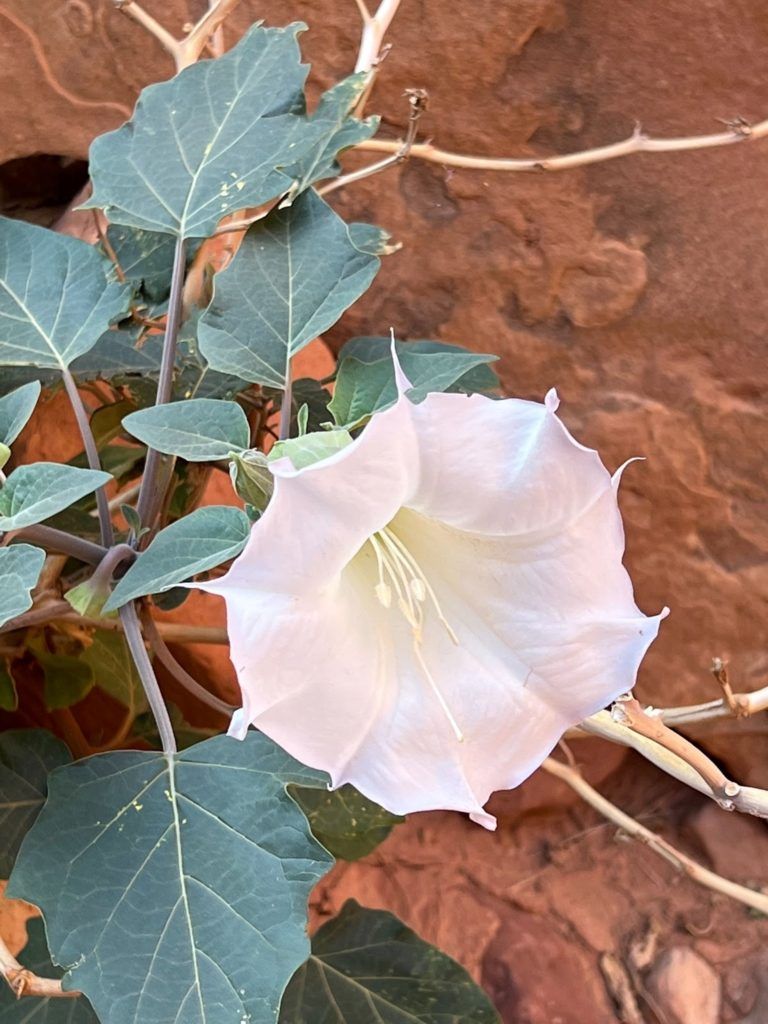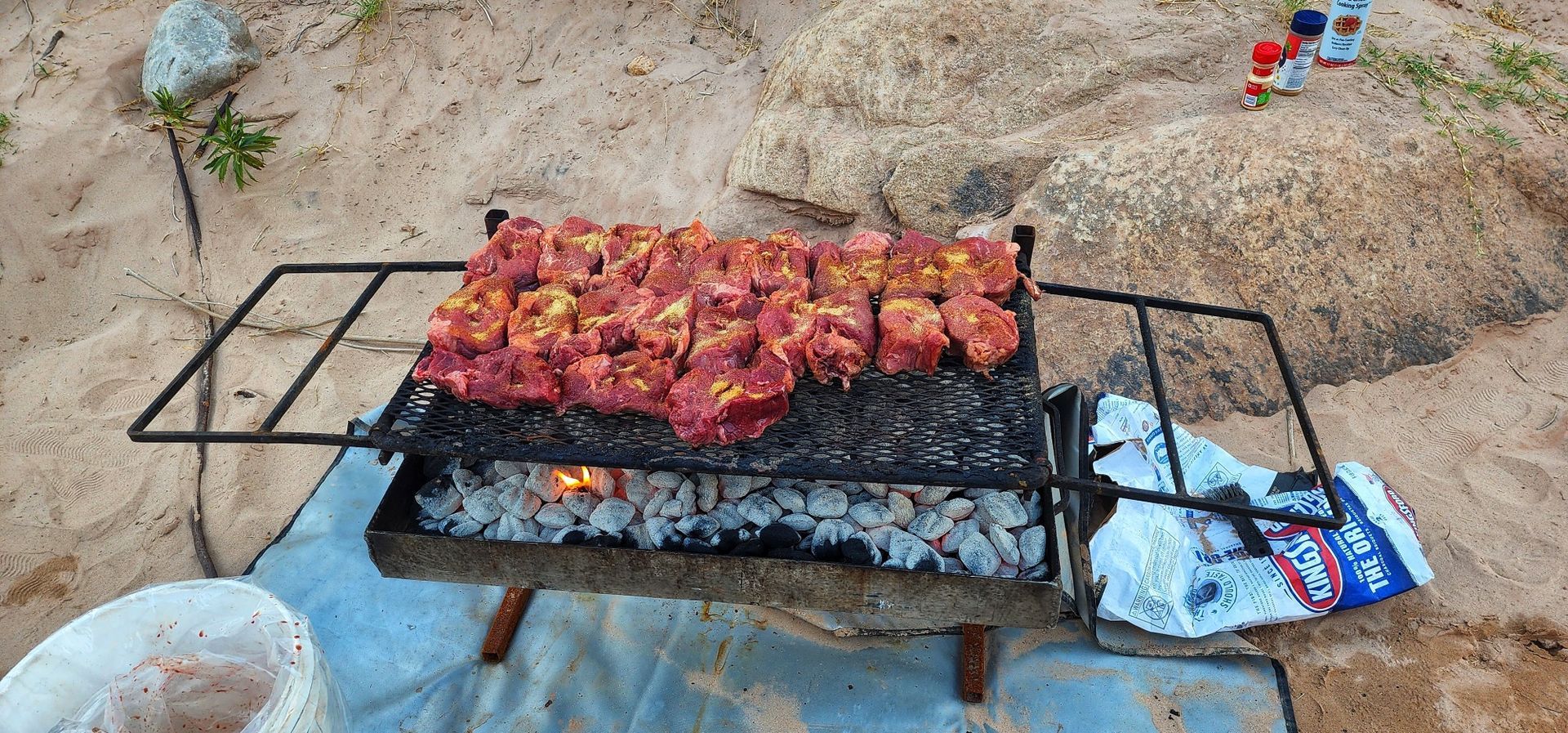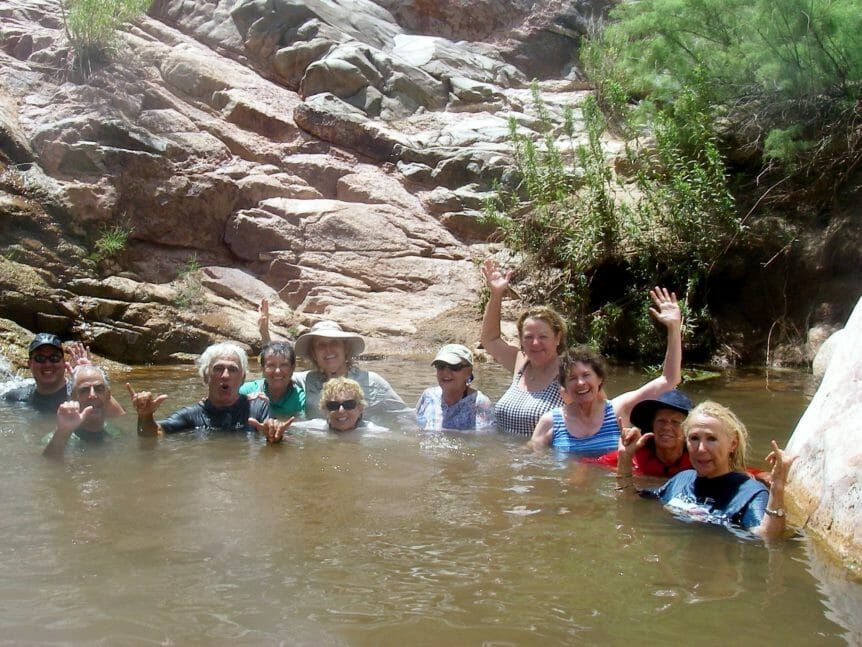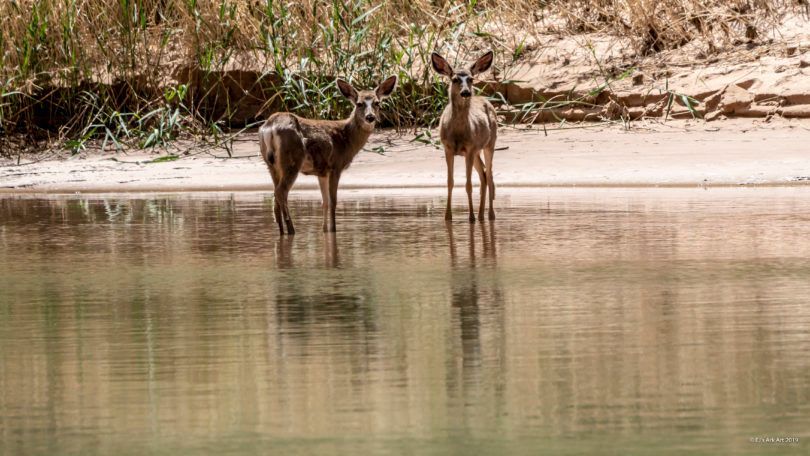Grand Canyon Flora – Part 2
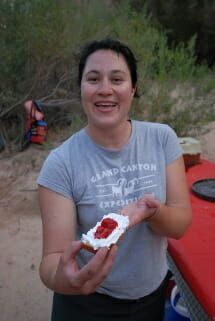
Utah Agave
Utah Agave is one of the most cold-tolerant agaves in the canyon. It has attractive, blue-green leaves. It needs full sun to grow, and blooms in the summer when it is near the end of its life. The bloom can grow up to 15′ tall – over a foot a day in growth!
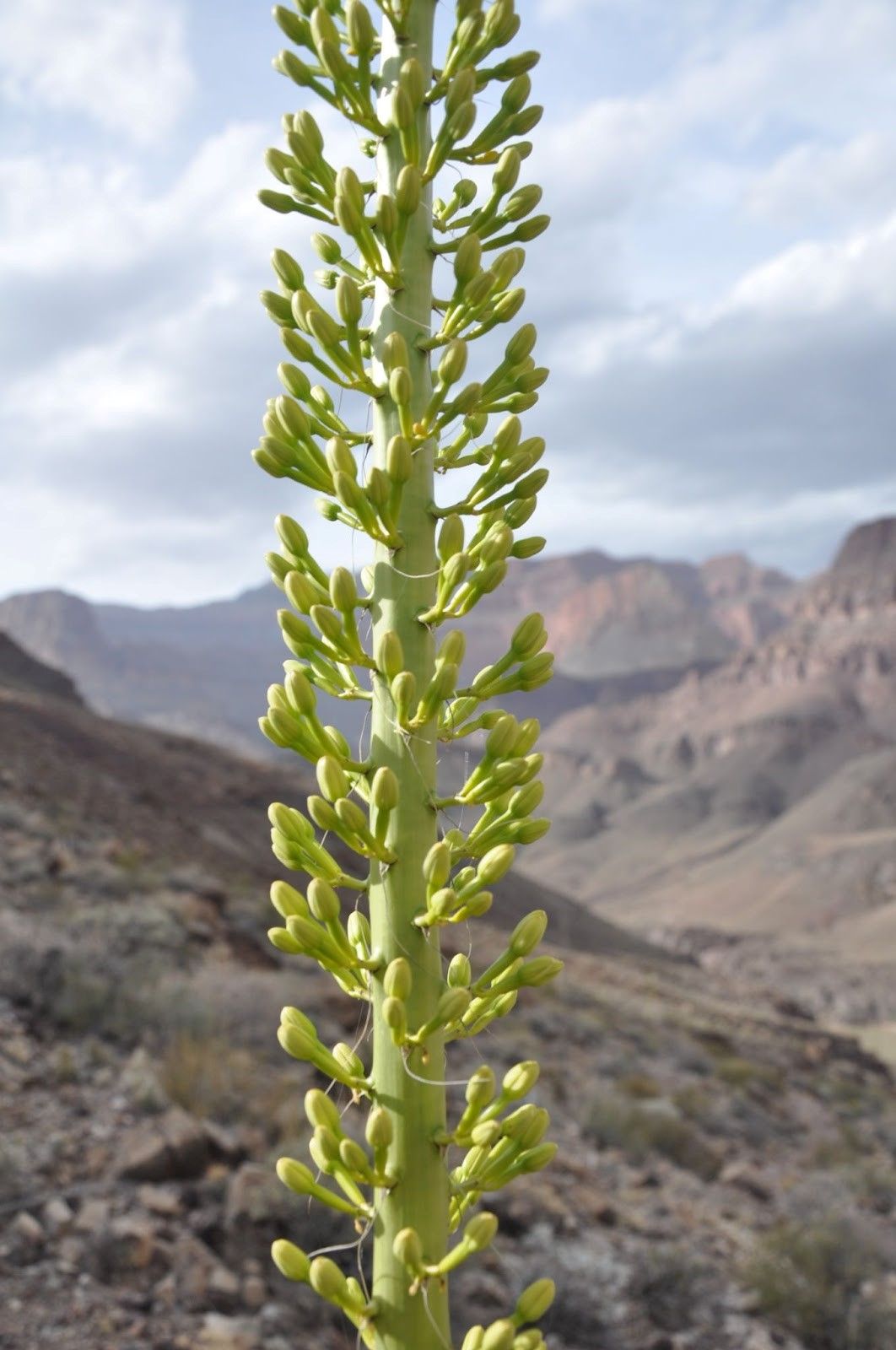
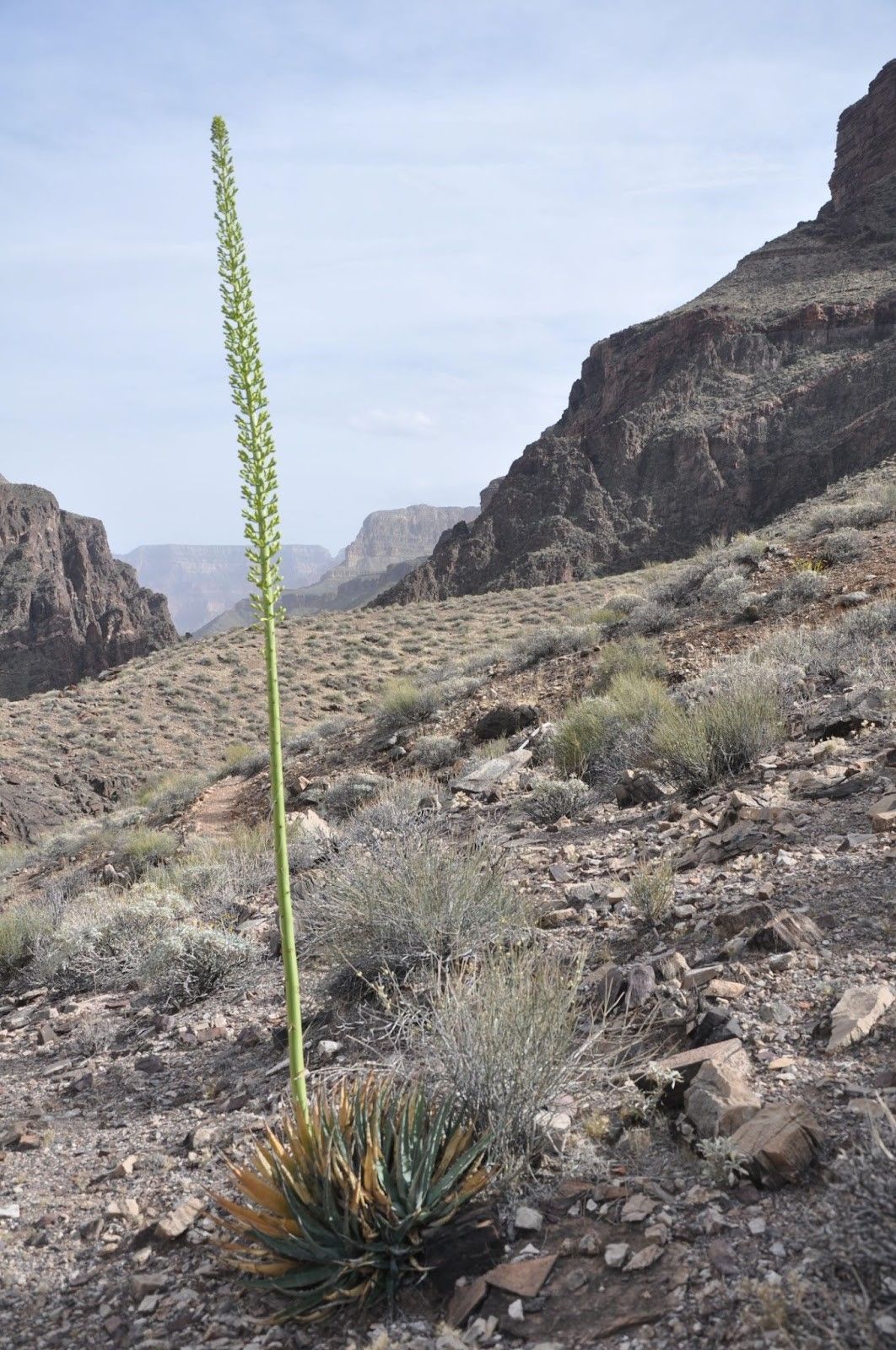
Tamarisk (Salt Cedar)
The Tamarisk was brought in by the National Park Service and quickly spread throughout the Canyon until it was labeled as an invasive species. It pulls lots of water out of the ground and the river to sustain itself.
“The impacts caused by Tamarisk in the southwest are well documented. These prolific non-native shrubs displace native vegetation and animals, alter soil salinity, and increase fire frequency. Salt cedar is an aggressive competitor, often developing monoculture stands and lowering water tables, which can negatively affect wildlife and native vegetative communities. In many areas, it occupies previously open spaces and is adapted to a wide range of environmental conditions. Once established in an area, it typically spreads and persists.” –NPS Website
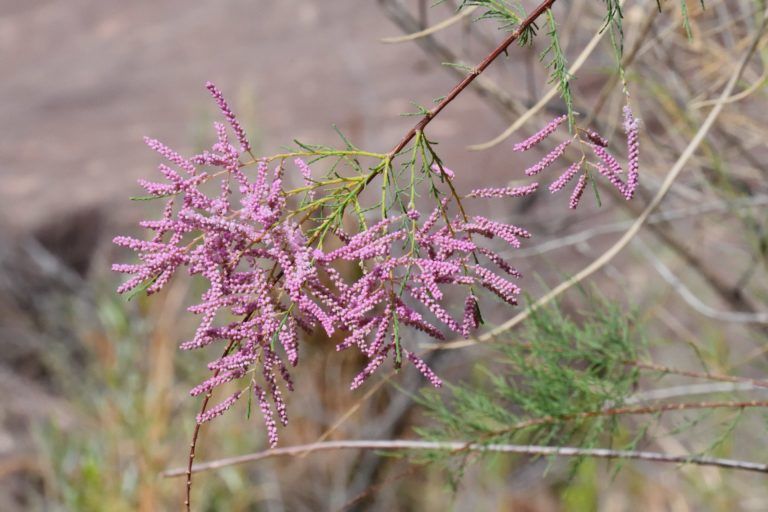
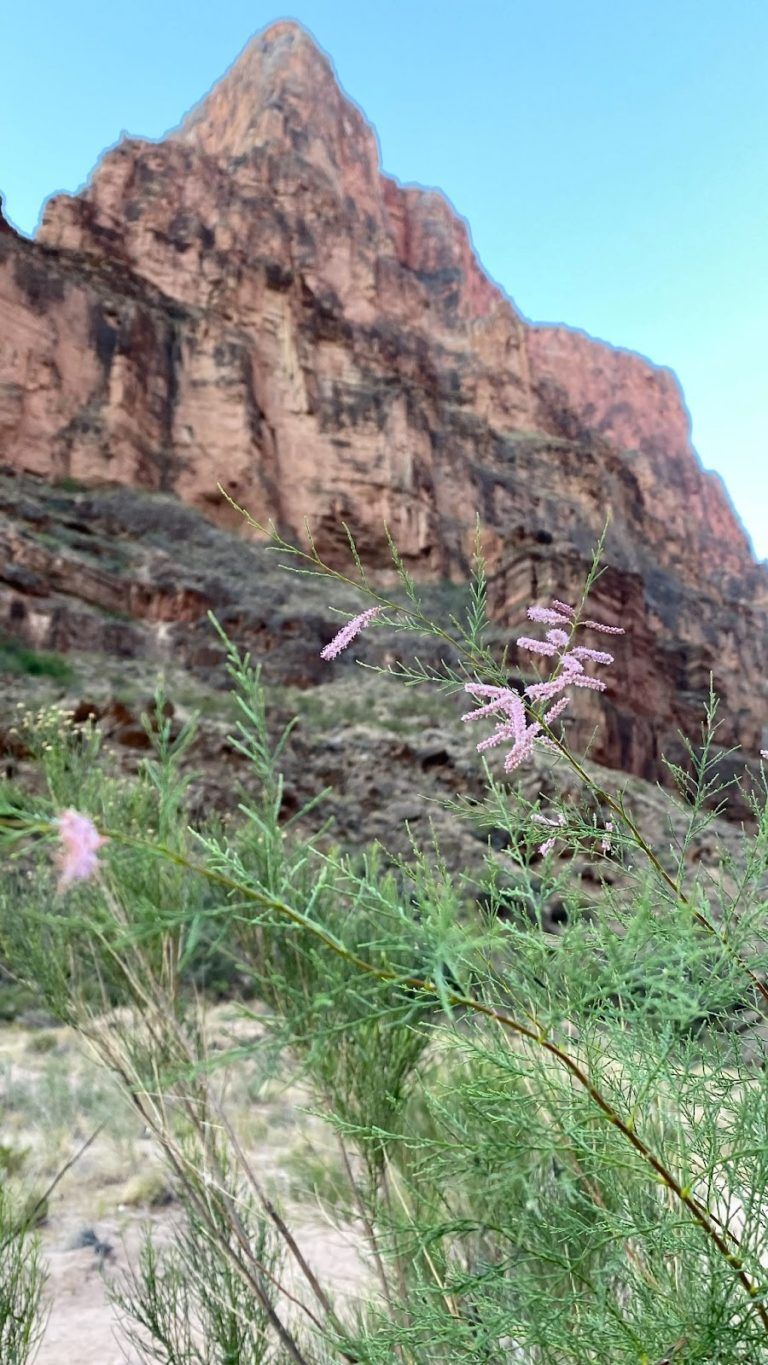
Stream Orchid
the Stream Orchid or Epipactis gigantea is one of the most abundant orchids in the West. It is a companion plant to the monkeyflower and is an erect perennial that grows in wet areas in a variety of habitats.
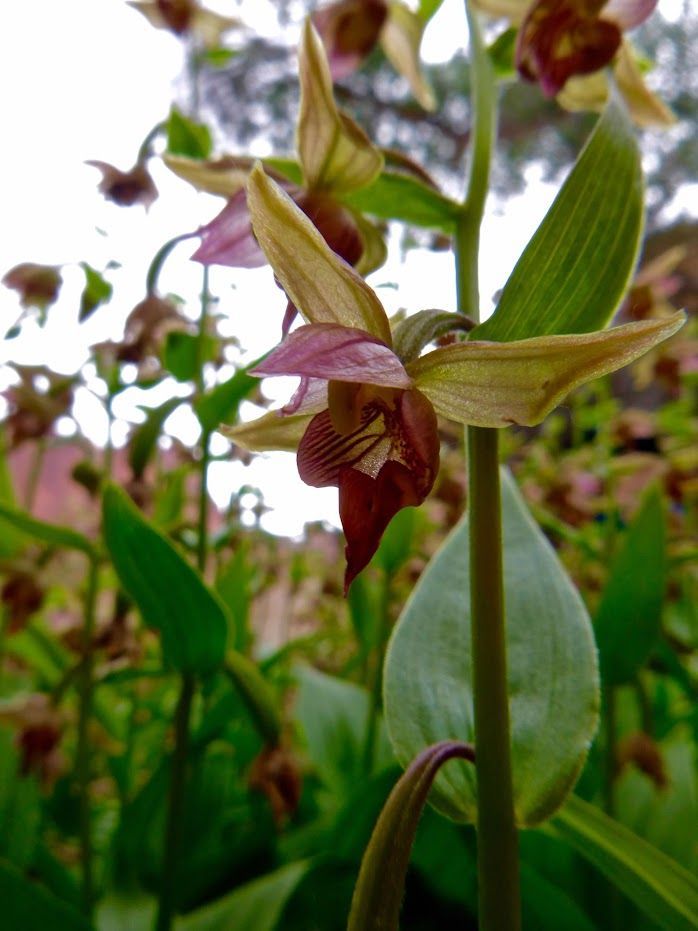
Brittlebush
Brittlebush is a dominant sage scrub found throughout the western and southwestern united states. It was used in Arizona to help prevent highways with erosion. According to the United States Department of Agriculture:
Brittlebush is a dominant sage scrub found throughout the western and southwestern united states. It was used in Arizona to help prevent highways with erosion. According to the United States Department of Agriculture:
“The stems of brittlebush exude a clear resin used by the Native Americans as glue and chewing gum. In the churches in some parts of Mexcio the resin is burned as incense. The Seri Indians of Sonora, Mexico, use the brittlebush twigs as a remedy for toothaches. They also grind the resin and sprinkle it on sores.”
The United States Department of Agriculture – USDA.GOV
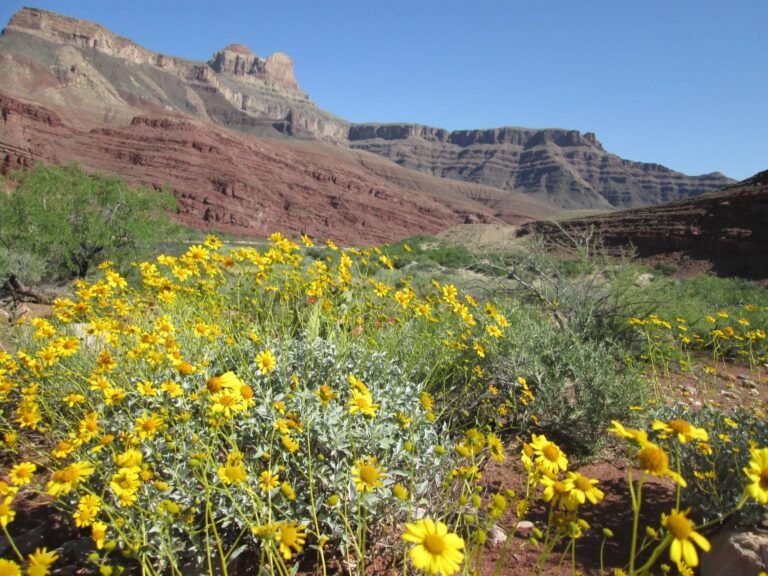
California Redbud
“Growing as a small tree or shrub the California redbud (Cercis occidnetalis) bursts with showy purplish-pink flowers in the early spring. The sweetpea shaped flowers grow in clusters along the branches making this one of the monuments showiest blooming trees. Once the blooms fall, light colored green leaves will begin to thicken and darken as the season goes on. These leaves will facilitate the trees annual growth. When temperatures cool and the sun is lower in the sky, the tree will begin to change color from yellow to red to brown.
Growing in canyons, pockets between rock crevices, and on the benches of slopes, the California redbud may be difficult to find. The plant is drought tolerant and grows in a wide variety of soils but is usually found in harsh environments with poor soils.”
National Park Service / nps.gov
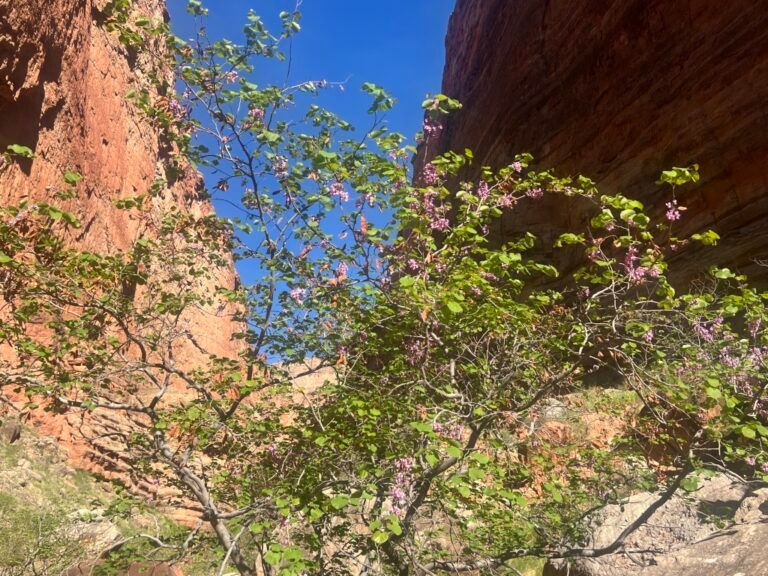
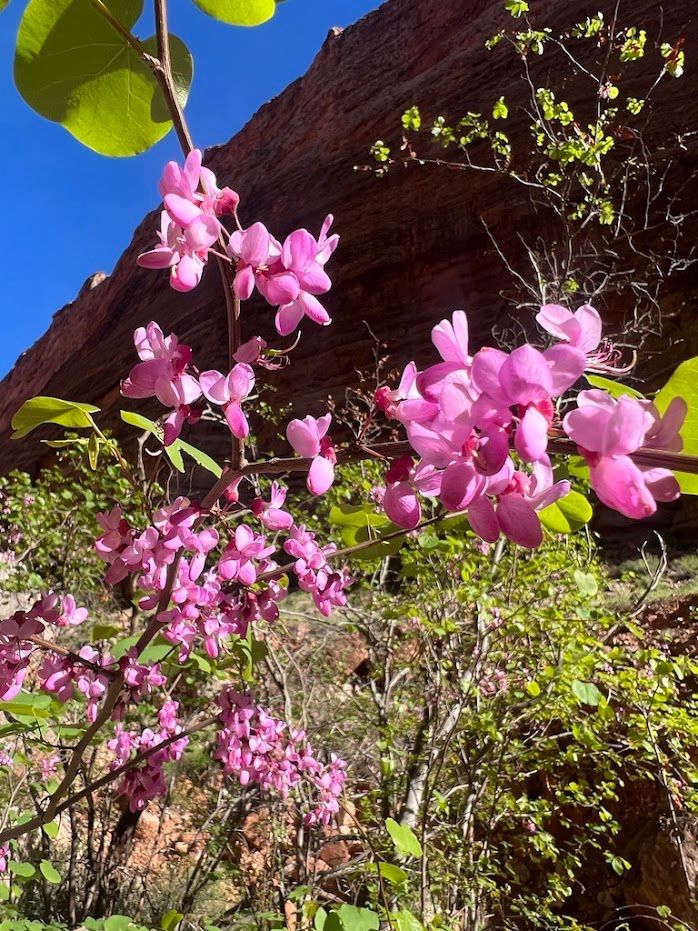
Sacred Datura
Scared Datura is a really cool plant that has a 6-7 inch flower that blooms in the late afternoon and evening. It’s a favorite plant of hawkmoths but can cause dermatitis to humans with sensitive skin. It’s a very poisonous plant (all parts of it) that we recommend only looking at.
